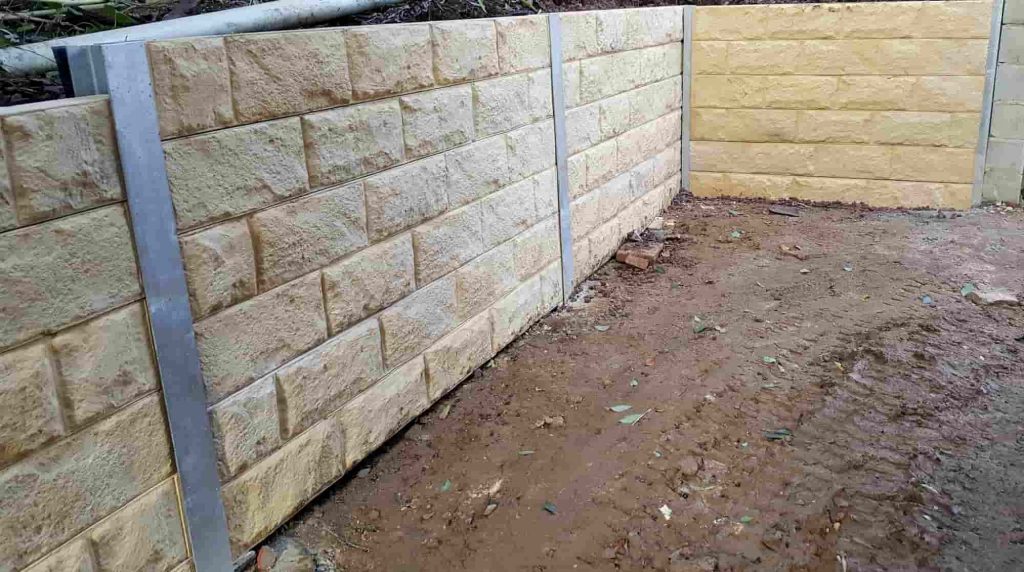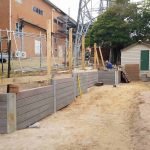Introduction
When it pertains to landscaping and structural integrity, few elements are as vital as retaining walls. They supply stability, improve visual appeals, and prevent soil erosion. Nevertheless, not all retaining wall setups are produced equal. What sets top-tier retaining wall installers apart? It's a question that lots of homeowners consider when preparing their outdoor projects. In this post, we'll explore the differentiating features of elite installers-- including their knowledge in products like timber sleeper and concrete sleeper walls, their use of H beams for added support, and their professional technique to every project.
What Sets Top-Tier Retaining Wall Installers Apart?
Top-tier retaining wall installers stand apart due to their extraordinary skills, experience, and dedication to quality. Here's what http://kameronduss330.iamarrows.com/how-to-find-trustworthy-retaining-wall-installers-near-you makes them really special:
Expert Knowledge of Materials- The best installers have an extensive understanding of different materials-- whether it's timber sleeper walls that provide a rustic beauty or concrete sleeper choices offering sturdiness and strength.
- Their styles are thoroughly prepared to make sure that they fit the landscape while sticking to engineering requirements. They think about aspects like drainage, soil type, and load-bearing capacity.
- These experts don't just toss up a wall; they use innovative setup techniques that guarantee durability and stability.
- Top-tier installers pay close attention to information that others may neglect-- whatever from the positioning of blocks to the complements that boost visual appeal.
- They adhere strictly to security regulations throughout installation procedures to secure both employees and property.
- Effective communication with clients guarantees that expectations are satisfied and any issues are quickly addressed.
- Many top-rated installers include eco-friendly practices into their work process, ensuring very little environmental impact.
- Providing warranties on work completed showcases confidence in quality while assuring customers of continuous support.
- Their focus is always on client satisfaction; they aim to exceed customer expectations through every phase of the project.
- Offering maintenance services or guidance after installation shows a dedication beyond just getting the job done.
Understanding Various Types of Retaining Walls
Timber Sleeper Walls
Timber sleeper walls have acquired popularity for their visual appeal and ease of setup. Made from treated wood, these walls can be an appealing addition to gardens or outdoor spaces.
- Pros:
- Cons:
Concrete Sleeper Walls
Concrete sleeper walls add a modern touch while offering exceptional strength compared to timber alternatives.
- Pros:
- Cons:
H Beam Reinforcement
H beams play a vital role in strengthening keeping walls, especially for taller structures needing extra assistance versus lateral earth pressure.
- Benefits:
- Enhanced structural integrity Increased resilience over time
Factors Affecting Retaining Wall Costs
Material Choice
The choice between timber sleeper, concrete sleeper, or even stone will considerably affect costs.

Wall Height & & Length
Taller and longer walls need more products, labor, and engineering factors to consider-- thus increasing general expenses.
Site Conditions
Challenging website conditions such as high slopes or rocky surface can complicate installation processes leading to greater costs due to extra labor requirements.
Local Regulations & Permits
Some areas might require particular authorizations before building starts which can include costs through charges or delays in scheduling work.
Installation Process Explained
Step-by-Step Guide
Initial Assessment: Talking about ideas with clients. Site Assessment: Evaluating soil conditions. Design Planning: Developing comprehensive designs. Material Choice: Choosing between wood sleepers or concrete sleepers based on needs. Preparation Work: Cleaning the area for structure laying. Foundation Building: Building a strong base utilizing H beams if necessary. Wall Building and construction: Setting up the wall following style specifications. Finishing Touches: Including aesthetic appeals such as caps or landscaping around the wall. Final Evaluation: Ensuring everything is up-to-standard before completion.Common Mistakes Made by Do It Yourself Installers
Many property owners think about installing keeping walls themselves but frequently neglect important aspects leading to bad outcomes:
Failure to Plan Appropriately: Skipping style stages can lead to misalignment concerns later down the road.
Incorrect Product Usage: Passing by appropriate products for specific ecological conditions can trigger early failure.
Lack of Drainage Solutions: Overlooking proper drain can lead to water buildup triggering damage over time.
4. Ignoring Regional Regulations: Not obtaining necessary permits might lead property owners into legal trouble later down the line!

FAQ Section
Q1: For how long does a retaining wall last?
A: With appropriate building utilizing quality materials like concrete sleepers or wood sleepers-- and ideal maintenance-- it can last anywhere from years as much as much more than fifty years!
Q2: Do I need an authorization for building a maintaining wall?
A: Yes! A lot of city governments need authorizations depending upon height limitations; consult your regional authority before beginning any project!
Q3: What's better-- lumber or concrete sleepers?
A: It depends on your requirements! Timber provides natural appeal at lower costs while concrete supplies boosted durability but at higher initial expenses!
Q4: How deep need to footings be for a maintaining wall?
A: Typically speaking footings should extend below frost lines; typically anywhere in between twelve inches(30 cm)for smaller structures up till twenty-four inches(60 cm)for bigger ones!
Q5: Can I build my own retaining wall?
A: While DIY is possible; employing professionals guarantees compliance with best practices which ultimately leads towards greater durability & complete satisfaction rates down the line!
Q6: Exist any maintenance tips I should follow?
A: Routinely inspect joint seals & drain locations keeping them clear from debris will help maintain functionality over time!
Conclusion
In conclusion, comprehending what sets top-tier retaining wall installers apart is vital for anybody thinking about such projects on their home! By concentrating on proficiency across different materials-- from timber sleeper options right through strong concrete choices-- these experts highlight quality craftsmanship together with robust post-installation support! As you embark upon your journey towards improving your outdoor area with wonderfully constructed retaining walls keep in mind-- it settles huge time buying skilled craftsmanship instead cutting corners through more affordable alternatives! With this understanding under your belt you'll be well-equipped making informed choices moving forward!